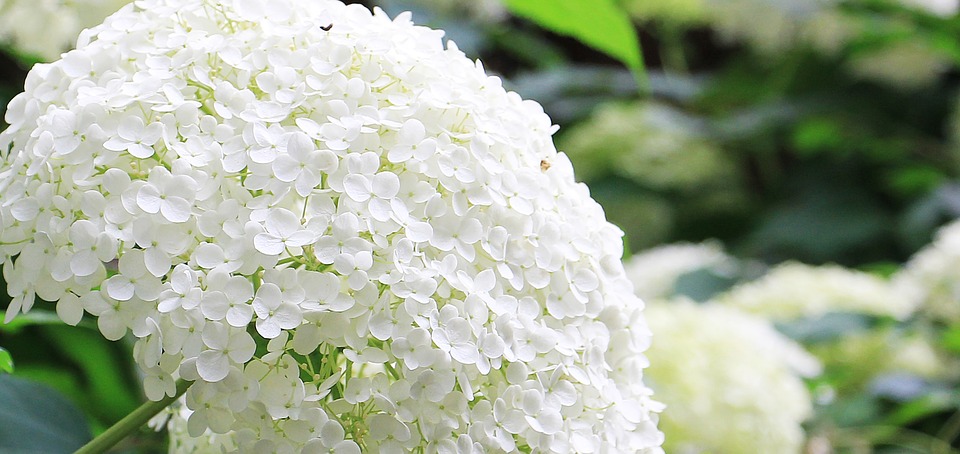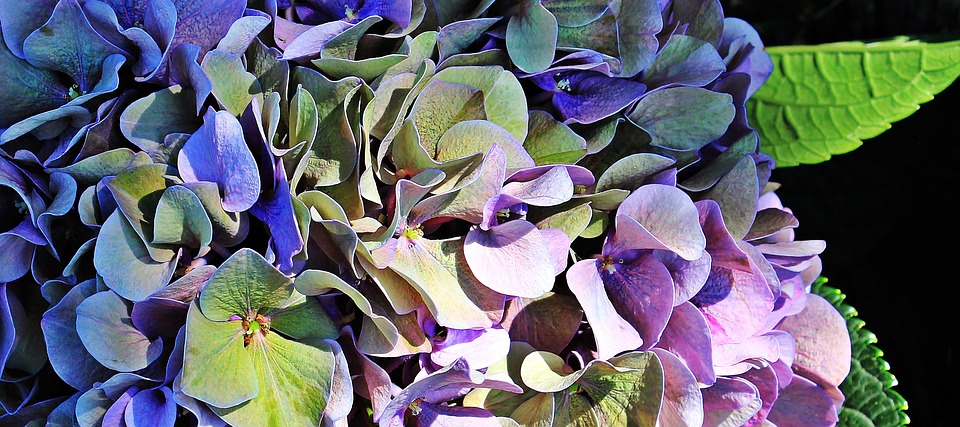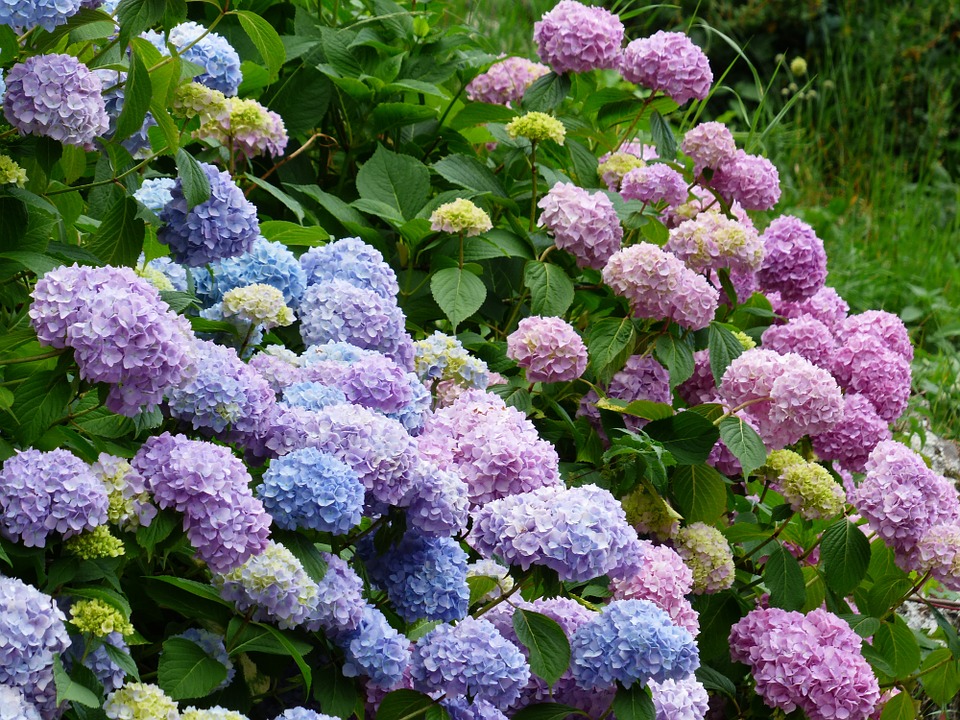
Facts about the Arborescens Annabelle Hydrangea Plant
- 3 to 9 USDA Hardiness Zone rated.
- Grows to 3 to 5 feet in height.
- Spans 4’ to 6’.
- Should be placed under a partial shade where it still gets direct exposure to the sun.
- Produces white flowers.
- The period between June and September marks its bloom time.
- Hydrangea Arborescens “Annabelle” is its scientific name.
Annabelle
The most popular variety of the Smooth Hydrangea arborescens family is the Annabelle. It was the most popularly known Hydrangea arborescens by the pubic and was the only one that was easily found in garden centers, until recently.
The plant which grows to a height of 3 to 5 feet with a relatively wider spread is considered to be a mounding shrub. Its large white blooms, usually 8 to 12 inches in diameter, which can be used in dried or fresh floral arrangements are produced between the months of July and September.
It is considered to be a great option for an assorted border since it flowers in summer and is small in size. Even though the plant grows well in the full sun where sufficient moisture is available, Annabelle is mainly suited to growing in partial shade, on well-drained and uniformly wet soil. Most gardeners prune the stems to the ground in winter because the plant mostly flowers on the “new wood” (new season’s growth). In the same summer, new shoots grow and bloom from the remaining base. Gardening enthusiasts in the Southwest arid areas should avoid this plant.
Among the top one hundred vine and shrub species cultivated for their expansive and flashy flower heads, Hydrangea is a treasured genus. One of the main reasons for having Hydrangeas is that they give their best during the summer and fall seasons, when most woody shrubs are dormant.

The plant’s flowers usually exceed 10 inches in diameter and are stunningly white.
This variant usually blooms following intense winters or severe pruning unlike other variants such as the pink and blue Hydrangeas. Without fail, the white blooms, resembling drumsticks, appear in abundance. Since the shrub can be severely pruned to tidy things up during winter, many gardeners choose to plant it as a hedge.
In both warm and colder geographic areas, this shrub makes for an exceptional display. Although it is officially classified under Zone 3, there has been word of it doing well in US Zone 2 as well. You will find, native to some eastern regions of the US, some forms of Hydrangea arborescens. Annabelle is definitely a great alternative to consider if your climate happens to be too harsh on macrophyllas.
Looking After Arborescens Annabelle Hydrangea
You need to shelter the plants from the afternoon sun with shade even though they do well with direct exposure to the morning sun, or spotted shade all day – especially when grown in the south, just as is the case with most other hydrangeas. The shrub does well will all-day exposure to the sun in northern regions of the US. Though I have not fund it to be true, the Annabelle is said to do better in heavy shade than other Hydrangeas in some literature. For me, it seems to bloom better with more sun exposure. In both the colder north and the warmer Deep South (US Zones 8 to 3), Arborescens will do well.

How To Support The Droopy Bloom Heads Of The Annabelle
This is considered to be one of the biggest challenges of growing this attractive hydrangea. After it rains, the expansive Annabelle booms tend to bend downwards. The entire plant maybe flattened as a result, in severe cases.
To prevent or reduce the effect of this challenge, follow the tips listed below:
- Use an ornamental fence to support the Annabelle: When it comes to supporting the heavy Annabelle flowers, this is one of the most creative ideas we have come across.
- Grow a group of Annabelle plants next to each other: Planting around 3 Annabelle plants together ensures that they can support each other as they mature. The plants should be about three to four feet away from each other.
- Do not cut down the plants severely: Instead of pruning your plants to the ground each year, it might be better for you to cut it down to about 18 to 24 inches in height to keep it from flattening in the rain. The stems will bulk up, year after year, making it easier for them to support the rest of the plant. The number of blooms will continue to be high while their size will diminish, but not to disappointing proportions. Smaller booms are not going to droop as easily of course. This tip may not work for shrubs grown in northern regions. This is simply because the stems are unlikely to survive the winter.
- Encircle each plant with a short wire fence: The flowers will be held in place, away from the ground, if young shrubs are encircled by a wire fence before new shoots emerge in spring. You can find 18 inch green wire fencing designed for use in lining flower beds in local gardening supplies stores. Design something resembling a short tomato cage by cutting the wire into bits that can go round the base of the plant. The wire will be hidden completely as the plant start producing leaves.
Pruning Your Annabelle Hydrangea
Every year, this Hydrangea grows blooms on new shoots. These plants can handle aggressive pruning since they are aggressive bloomers. If you would like your plant to have strong branches, you should only cut it down to 18 to 24 inches in height, as mentioned above. These shrubs will grow back each year and produce a huge amount of attractive flowers, without any issues, even if you decide to cut them down completely. However, you should never prune the plants when they are getting ready to bloom, during spring.
Spacing Your Arborescens Hydrangea

Plant the shrubs about three to four feet away from each other if they are part of a hedge, or you want them to support each other. If this is not the case, then plant them about five or six feet away from each other.